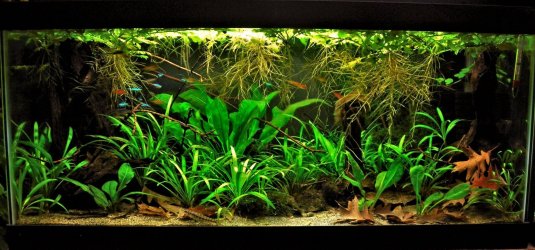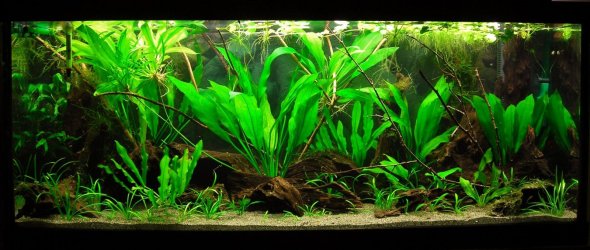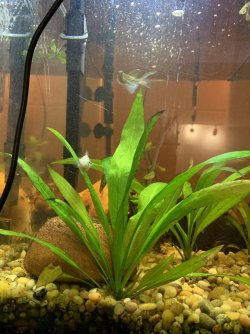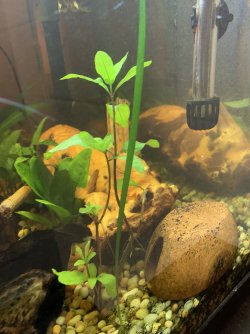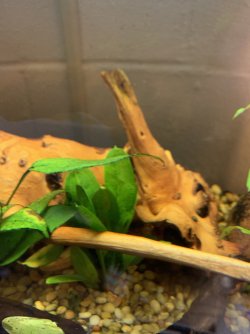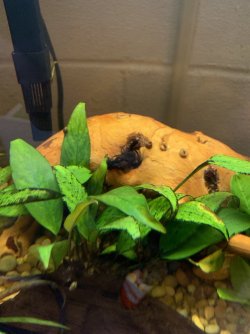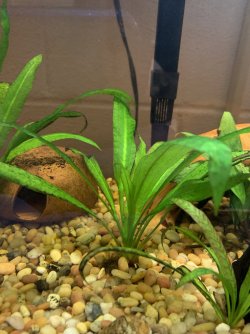kribensis12
I know where you live
Hello,
Suffice it to say that I have never, ever had a planted tank thrive (beyond once having duckweed...). I've never killed off plants, but they always seem to just "exist". I can grow almost anything in soil, but I'm really struggling here... Looking for some general advice - and I will make note that while there are certain things I can do (like change my substrate), they may not be practical for me. Still any advice is welcome because I'd love to learn how I can do better now or in the future.
I've picked some plants up on clearance and don't remember the names but currently I have about 5 Sword Plants (variations, one is an Amazon Sword), some Java Fern, and two other types.
Water stats of my testing last week:
pH: 7.4
Ammonia/Nitrite: 0
Nitrate: 10
Hardness: Pretty soft as I mix RO water with a smidge of our tap water (which is EXCEPTIONALLY HARD).
Tank Light:
20 inch LED: 72 LEDs, with 60 being white and 12 being blue. Broadcasts at 640 lumens (11 watt)
--->https://www.amazon.com/gp/product/B00X84LVH6/?tag=ff0d01-20
Tank Size: 20g, with pea sized gravel substrate and driftwood
Fertilizing: I use Seachem's Flourish 2x weekly and Seachem's Phytonutrient daily.
As I said, plants seems to "exist", but no real growth. What am I doing wrong or could I be doing better?
Suffice it to say that I have never, ever had a planted tank thrive (beyond once having duckweed...). I've never killed off plants, but they always seem to just "exist". I can grow almost anything in soil, but I'm really struggling here... Looking for some general advice - and I will make note that while there are certain things I can do (like change my substrate), they may not be practical for me. Still any advice is welcome because I'd love to learn how I can do better now or in the future.
I've picked some plants up on clearance and don't remember the names but currently I have about 5 Sword Plants (variations, one is an Amazon Sword), some Java Fern, and two other types.
Water stats of my testing last week:
pH: 7.4
Ammonia/Nitrite: 0
Nitrate: 10
Hardness: Pretty soft as I mix RO water with a smidge of our tap water (which is EXCEPTIONALLY HARD).
Tank Light:
20 inch LED: 72 LEDs, with 60 being white and 12 being blue. Broadcasts at 640 lumens (11 watt)
--->https://www.amazon.com/gp/product/B00X84LVH6/?tag=ff0d01-20
Tank Size: 20g, with pea sized gravel substrate and driftwood
Fertilizing: I use Seachem's Flourish 2x weekly and Seachem's Phytonutrient daily.
As I said, plants seems to "exist", but no real growth. What am I doing wrong or could I be doing better?


